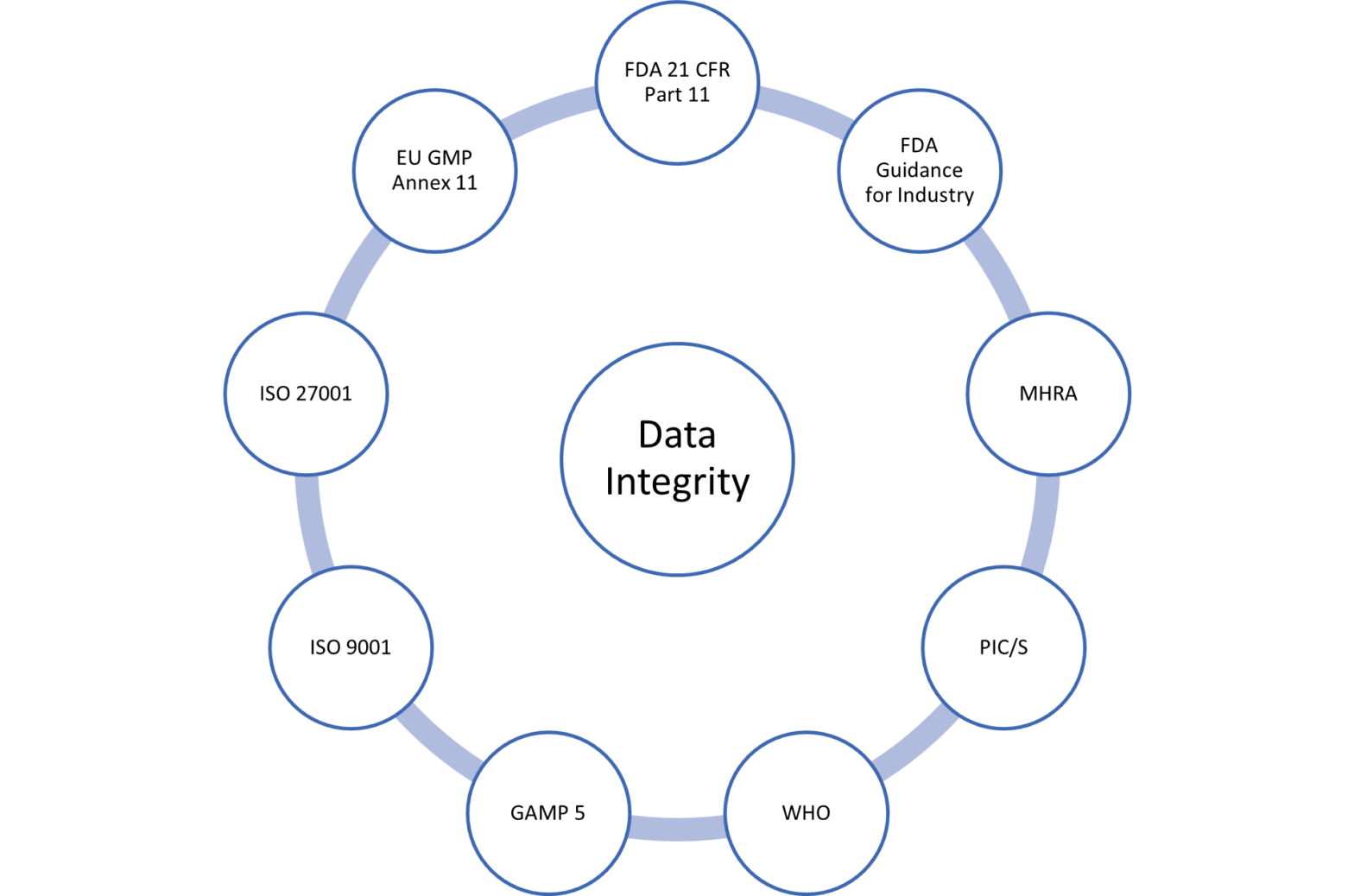Introduction data integrity versus regulations and guidelines
Data integrity in regulations and guidelines means making sure data is accurate, reliable, and stays the same throughout its whole life, from when it’s made and gathered to when it’s kept, brought back, and reported. Making sure data integrity is there is super important in many industries, like pharmaceuticals, healthcare, finance, and others. It’s about keeping data trustworthy and following the rules.
The definitions and descriptions usually talk about how data integrity needs to be accurate, consistent, complete, and reliable all the time. Making sure data integrity is there is crucial in industries with rules because it keeps products and processes good in quality and safe. Companies that have to follow these rules and guidelines need to do things and put controls in place to keep data integrity safe.
Data integrity definitions or descriptions
Data integrity is a basic idea in rules and systems for managing quality, and though the words “data integrity” are used in the same way in many rules and guidelines, the exact meanings might be a bit different<h3>
List of definitions or descriptions of data integrity as described in available regulations and guidance documents
| Regulations & guidance document | Data integrity description |
| FDA 21 CFR Part 11 (Electronic Records; Electronic Signatures):
|
Data integrity is not explicitly defined in 21 CFR Part 11, but the regulation addresses electronic records and signatures’ trustworthiness and reliability. It emphasizes ensuring the accuracy and reliability of electronic records.
|
| FDA Guidance for Industry – Data Integrity and Compliance with Drug CGMP:
|
“Data integrity is the degree to which data is complete, consistent, accurate, and reliable.”
|
| MHRA (Medicines and Healthcare products Regulatory Agency) GxP Data Integrity Definitions and Guidance for Industry:
|
“Data integrity is the degree to which data is complete, consistent, accurate, trustworthy, and reliable.”
|
| PIC/S (Pharmaceutical Inspection Cooperation Scheme) PI 041-1: Good Practices for Data Management and Integrity in Regulated GMP/GDP Environments: | “Data integrity is the assurance that data are complete, consistent, and accurate.” |
| WHO (World Health Organization) – Good Data and Record Management Practices: | “Data integrity is the maintenance and assurance of the accuracy and consistency of data over its entire life-cycle.” |
| GAMP 5 (Good Automated Manufacturing Practice): | “Data integrity means that data should be accurate, complete, and preserved as intended.” |
| ISO 9001 (Quality Management System):
|
ISO 9001 does not define data integrity explicitly, but it emphasizes the importance of maintaining the accuracy and consistency of data. |
| ISO 27001 (Information Security Management System):
|
ISO 27001 does not explicitly define data integrity, but it focuses on the protection of data, which includes preserving its integrity. |
| EU GMP Annex 11 (Computerized Systems): | “Data integrity means maintaining and assuring the accuracy and consistency of data.” |
Understanding the difference between regulations and guidelines
Guidelines and regulations are tools used to establish and enforce standards and practices in various fields, but they have differences in terms of their legal status, binding nature, and flexibility.
Regulations are legally binding, mandatory rules that come with legal consequences for non-compliance. They are issued by governmental authorities or regulatory agencies, carrying the force of law. Non-compliance with regulations can result in penalties or legal action. On the other hand, guidelines are non-binding recommendations providing flexible advice and best practices for achieving specific goals or standards. Organizations and individuals generally have more discretion in how they implement guidelines, as compliance is usually voluntary.
Here are the key differences between guidelines and regulations:
Legal Status:
- Regulations: These are legally binding rules issued by authorities. Non-compliance can lead to penalties or legal action.
- Guidelines: These are non-binding recommendations, and compliance is typically voluntary. They lack the same legal status as regulations.
Enforceability:
- Regulations: Authorities can take legal action against those not complying with regulations.
- Guidelines: Not enforceable in the same way as regulations. While they offer guidance, there are usually no legal consequences for non-compliance.
Flexibility:
- Regulations: Often rigid and prescriptive, leaving little room for interpretation or deviation.
- Guidelines: More flexible, allowing interpretation and adaptation to specific circumstances.
Applicability:
- Regulations: Typically established by government authorities, universally applying to all entities or individuals within the jurisdiction.
- Guidelines: Developed by various entities such as government agencies, professional organizations, or industry groups. They may be specific to certain industries, professions, or contexts.
Purpose:
- Regulations: Primarily designed to set minimum standards, ensuring a baseline level of compliance in areas like safety, health, environmental protection, and consumer rights.
- Guidelines: Meant to offer guidance, foster best practices, and promote continuous improvement. Often used as references for quality improvement and self-regulation.
